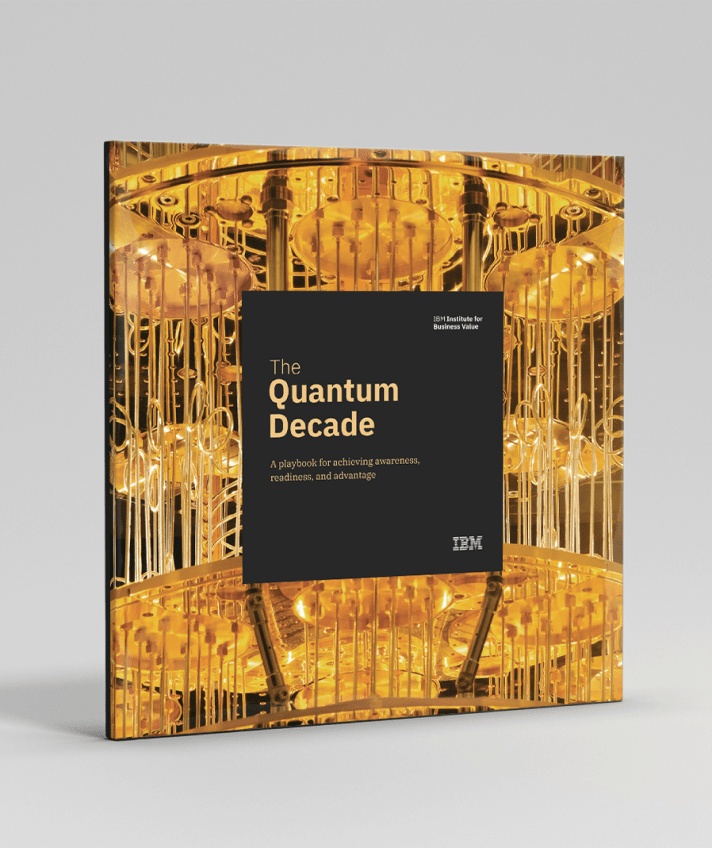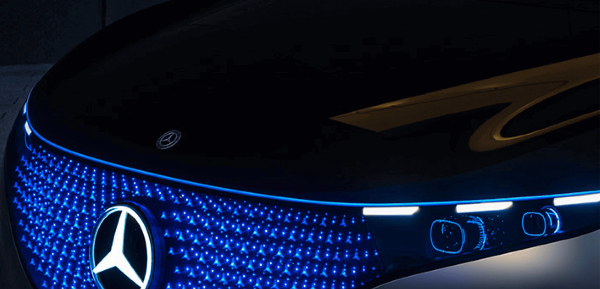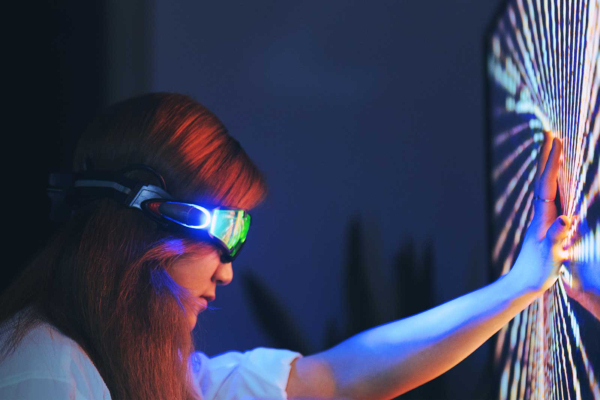The quest to understand what sews the universe together
The smart money says that by the end of the 21st Century, many of today’s deepest mysteries of the universe will be unlocked at CERN. In 60+ years, the European physics laboratory has shown us how stars burn, seeded the World Wide Web, and found the Higgs boson – the particle that completed the Standard Model.
That Standard Model is a parts list for the cosmos, including all known fundamental particles. CERN’s most famous contributions to the Standard Model have come from the Large Hadron Collider (LHC) – the largest machine on the planet. The LHC accelerates beams of protons to near lightspeed along an underground magnetic racetrack. Those beams collide a billion times per second, forging strange particles in the proton chaos. The collider’s eight major detectors take notes on the maelstrom.
The data from those detectors form subtle patterns, detectable only with complex computation. These patterns are keys to unlock cosmic mysteries.
CERN’s partnership with IBM Quantum seeks new ways of finding patterns in LHC data. There’s reason to believe quantum computers might spot connections beyond the power of classical computers to detect – shedding light on hidden features of the universe.

Experiments in the Large Hadron Collider typically produce
petabyte of data per second
Analyzing that data requires almost
million classical CPU cores in 170 locations across the world
Is your organization ready for quantum computing? Download the report
The Large Hadron Collider’s successor — due to come online later this decade — will result in CERN’s computing requirements growing significantly.
CERN has grown increasingly interested in the potential of quantum computing. Quantum offers a new paradigm of calculation – it’s a method expressly suited for conquering complexity.
CERN’s ongoing effort to analyze its increasingly complex datasets now relies on the collaborative effort of close to one million CPU cores, working in 170 computer centers around the globe. With quantum computing, CERN has the potential to solve problems that even that impressive supercomputing arsenal would never be able to crack.
In 2018 CERN openlab joined the IBM Quantum Network, a growing circle of quantum researchers collaborating across industry, government, and academia – and sharing, via the cloud, IBM’s unmatched fleet of 23 working quantum computing devices. Using open-source tools, the IBM Quantum Network members are working today with quantum devices that may one day surpass classical limitations.
CERN openlab’s current Quantum Technology Initiative comprises dozens of projects across computing, sensing, communication, and theory. A recent collaboration with IBM scientists involves the detection and analysis of the Higgs boson, a recently discovered particle that helps explain the origin of mass. Sifting through raw data to find occurrences of Higgs behavior is a knotty problem that stretches classical computers to their limit. But machine learning, quantum or classical, offers tools for recognizing patterns like Higgs behavior in mixed-up datasets.
A simple problem: Take a random scattering of red and blue dots in a two-dimensional space, then draw a straight line separating all the red dots from all the blue dots. If all the red dots are on one side and all the blue on the other then the job is simple. But mix the dots up and it might seem impossible.
Classical machine learning can solve this problem: Transform the data to add a third dimension. Suspend the dots in the air and they’ll look the same as before when viewed from above. That means they maintain their fixed relationships in two dimensions, where no line could divide them. But view them from the side and they might cleanly separate into two different-colored clouds of dots, one higher than the other. It’s a new way of seeing the mess that reveals a hidden solution. Slide a flat piece of paper between the two clouds and they’re neatly divided.
That’s the “kernel trick,” the simple basis of the complex machine learning system that CERN uses to divide useful data (like collisions that produced Higgs bosons) from junk (like collisions where protons bounced off each other unchanged). It’s a matter of reframing the problem and looking at it from a new perspective.
That idea is the bread and butter of quantum machine learning as well, says IBM Quantum Computing Applications Researcher Jennifer Glick. But quantum computers can reframe problems in ways not available to classical computers, using quantum-specific forms computation to reveal otherwise-hidden patterns.
That toolkit lets agile quantum computers wade confidently through complex problems that bog down even the most muscular supercomputers.
“You can capture patterns or structure of your data that a classical kernel never could have captured,” Glick says.
Now, physicists at the University of Wisconsin led by Sau Lan Wu, CERN, IBM Research in Zurich and Fermilab are exploring how quantum machine learning could be used to better sift through LHC collision data. This effort is already yielding promising results.


Quantum computing may play a significant role in helping us to expand our knowledge beyond the standard model, exploring the many open questions related to issues such as dark matter, dark energy, the relationship between gravity and quantum mechanics, and more.
Quantum computing may play a significant role in helping us to expand our knowledge beyond the standard model, exploring the many open questions related to issues such as dark matter, dark energy, the relationship between gravity and quantum mechanics, and more.
A recent experiment compared a general-purpose quantum kernel algorithm – a generic quantum tool for pattern recognition, not an algorithm optimized for particle physics – to the best tailor-made classical-computing algorithms in CERN’s arsenal. In earlier work, IBM researchers showed conclusively that the quantum kernel should have an advantage over classical computers in certain circumstances. But it was not yet clear what that meant for CERN’s particular data-sifting tasks.
Applying the quantum tool to a sample of LHC data, the collaborative team of CERN- and IBM-affiliated researchers showed the general quantum algorithm already matching CERN’s best classical algorithms.
That’s a big deal. CERN’s classical algorithms are fine-tuned Higgs-hunting machines. They’ve been precisely optimized to look for the specific patterns that Higgs events produce in LHC data.
The quantum algorithm, known as a quantum support vector machine (QSVM) doesn’t have any of that specialization. The researchers showed that it could perform as well as CERN’s two state-of-the-art benchmark classical algorithms.
QSVM “could compete with the state-of-the-art classical methods, which was kind of surprising honestly,” Glick says, “because the kernel that was used there has no real connection to the underlying dataset. So you wouldn’t necessarily expect it to do well.”
That’s a positive signal that quantum computing could play a major role in CERN’s future, as the collaborative team refines its approach for CERN’s particular use case. As the hardware matures according to goals laid out in IBM Quantum’s hardware roadmap, the researchers expect to demonstrate a clear advantage over the classical competition.
CERN believes quantum computing may play a key role in the European laboratory’s next phase of discovery. Having identified the Higgs boson and filled in the final missing piece of the Standard Model, CERN researchers are aiming to smash particle physics wide open. That’s a task that will require performing more complicated computing tasks than ever and searching for more deeply hidden patterns.
There are already hints of new physics in the data CERN has produced: shadows of unseen particles and structures in the data, their existence implied by strange asymmetries and discordant relationships between the particles so far discovered – apparent gaps in the Standard Model of particle physics that imply missing pieces. Astronomy has revealed the existence of dark matter, an unknown heavy substance that seems to fill space. Working out what all of those mysteries mean will require new analyses. Quantum computers may offer the necessary tools.
CERN’s mission is to provide a unique range of particle accelerator facilities that enable research at the forefront of human knowledge, perform world-class research in fundamental physics, and unite people from all over the world to push the frontiers of science and technology, for the benefit of all.
IBM Quantum Network is a community of Fortune 500 companies, academic institutions, startups and national research labs working with IBM to advance quantum computing.
Are you ready?
In the next 10 years, quantum computing will transform business and society. Organizations that don't act now will be left behind.



